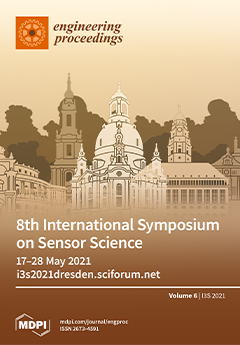Although showing impressive therapeutic potential, treatments of leukemias with T-cells expressing chimeric antigen receptors (CARs) is limited by their risk of several severe side effects. To overcome these problems, a switchable CAR platform has been developed termed UniCAR. Unlike conventional CAR, which is directed against tumor-associated antigens, UniCAR treatment involves an intermediate target module (TM), which can cross-link UniCAR T cells with tumor cells and lead to destruction. The development of these novel TMs against different tumor targets requires numerous repetitive tests on different synthesizing trials, which is usually limited in quantity and time-consuming. Meanwhile, nano-biosensors are lately known as analytical tools, which are highly sensitive, label-free, rapid and reagent-saving. Among them, silicon nanowire (SiNW) sensors have been extensively investigated by researchers over the past decades thanks to their compatibility with CMOS technology, enabling mass production. In this work, we demonstrated the application of a previously published SiNW biosensor on the detection of the binding of UniCAR and a part of different TMs. The results underline the advantages of the SiNW sensor over the ELISA method in terms of ease of preparation, speed and sensitivity. The method is able to evaluate the binding affinity of UniCAR to different TMs and open a potential to quantify the number of active UniCAR T-cells in an in vivo sample at a later stage. In the end, the application of a nanosensor may speed up the R&D process of the UniCAR concept and later play an important role in clinical monitoring of immunotherapy, especially in the era of precision medicine.

Although showing impressive therapeutic potential, treatments of leukemias with T-cells expressing chimeric antigen receptors (CARs) is limited by their risk of several severe side effects. To overcome these problems, a switchable CAR platform has been developed termed UniCAR. Unlike conventional CAR, which is directed against tumor-associated antigens, UniCAR treatment involves an intermediate target module (TM), which can cross-link UniCAR T cells with tumor cells and lead to destruction. The development of these novel TMs against different tumor targets requires numerous repetitive tests on different synthesizing trials, which is usually limited in quantity and time-consuming. Meanwhile, nano-biosensors are lately known as analytical tools, which are highly sensitive, label-free, rapid and reagent-saving. Among them, silicon nanowire (SiNW) sensors have been extensively investigated by researchers over the past decades thanks to their compatibility with CMOS technology, enabling mass production. In this work, we demonstrated the application of a previously published SiNW biosensor on the detection of the binding of UniCAR and a part of different TMs. The results underline the advantages of the SiNW sensor over the ELISA method in terms of ease of preparation, speed and sensitivity. The method is able to evaluate the binding affinity of UniCAR to different TMs and open a potential to quantify the number of active UniCAR T-cells in an in vivo sample at a later stage. In the end, the application of a nanosensor may speed up the R&D process of the UniCAR concept and later play an important role in clinical monitoring of immunotherapy, especially in the era of precision medicine.
